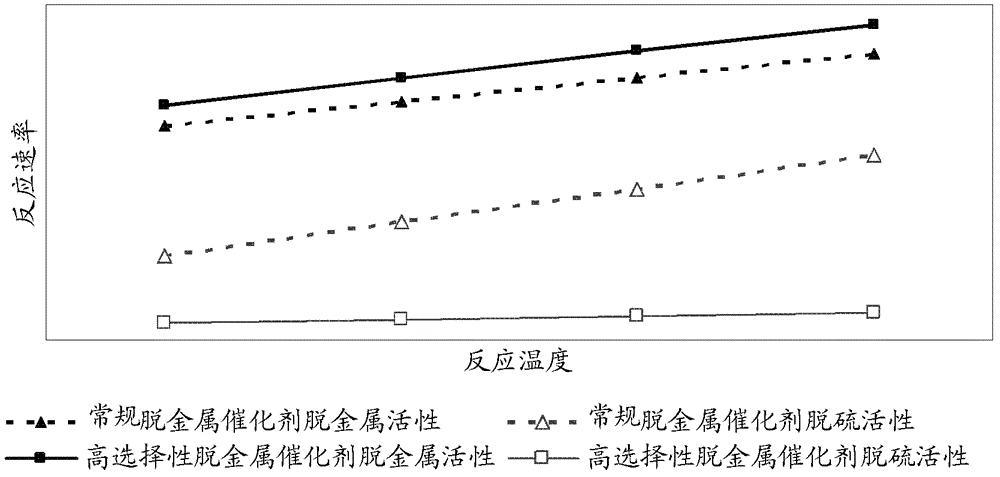Hydrotreating method for heavy residual oil
A heavy residual oil and hydrotreating technology, which is applied in the fields of hydrotreating process, hydrocarbon oil treatment, petroleum industry, etc., to achieve the effect of ensuring long-term stable use, reducing possibility, and reducing temperature rise
- Summary
- Abstract
- Description
- Claims
- Application Information
AI Technical Summary
Problems solved by technology
Method used
Image
Examples
Embodiment 1
[0031] The medium-sized residual oil hydrotreating test device of the Sinopec Petrochemical Research Institute was used to hydrotreat the light sandy slag A (see Table 1 for properties).
[0032] Three reactors are used, and the catalyst loading capacity of each reactor is 300mL. The catalyst loading conditions are shown in Table 2 (one reverse is the abbreviation of the first reactor, and the others are similar), wherein the high-selectivity hydrodemetallization catalyst used The properties of R-HS-1 are shown in Table 3. Hydrotreating conditions include: reaction temperature 380°C, hydrogen partial pressure 14.0MPa, hydrogen-oil volume ratio 700Nm 3 / m 3 , the volumetric space velocity is 0.2h -1 . Carry out the tests of 100h and 1000h respectively, and detect the properties of the product during 100h and 1000h, the results are shown in Table 4.
[0033] Table 1
[0034]
Light sandy slag A
Density at 20°C, kg / m 3
995.5
Viscosity at 100...
Embodiment 2
[0048] According to the method of Example 1, the light sandy slag A was subjected to hydrogenation treatment. The difference is that the catalyst loading conditions are shown in Table 7, and the properties of the high-selectivity hydrodemetallation catalyst R-HS-2 used are shown in Table 3. Hydrotreating conditions include: reaction temperature 330°C, hydrogen partial pressure 18.0MPa, hydrogen-oil volume ratio 1500Nm 3 / m 3 , the volumetric space velocity is 0.5h -1 . Carry out the tests of 100h and 1000h respectively, and detect the properties of the product at 100h and 1000h, the results are shown in Table 8.
[0049] Table 7
[0050]
[0051] Table 8
[0052]
Embodiment 3
[0054] According to the method of Example 1, the light sand and normal slag A was hydrotreated. The difference is that the catalyst loading conditions are shown in Table 9, and the properties of the highly selective hydrodemetallation catalyst R-HS-3 used are shown in Table 3. Hydrotreating conditions include: reaction temperature 400°C, hydrogen partial pressure 12.0MPa, hydrogen-oil volume ratio 1200Nm 3 / m 3 , the volume space velocity is 0.8h -1 . Carry out the tests of 100h and 1000h respectively, and detect the properties of the product during 100h and 1000h, the results are shown in Table 10.
[0055] Table 9
[0056]
[0057] Table 10
[0058]
PUM
 Login to View More
Login to View More Abstract
Description
Claims
Application Information
 Login to View More
Login to View More - R&D
- Intellectual Property
- Life Sciences
- Materials
- Tech Scout
- Unparalleled Data Quality
- Higher Quality Content
- 60% Fewer Hallucinations
Browse by: Latest US Patents, China's latest patents, Technical Efficacy Thesaurus, Application Domain, Technology Topic, Popular Technical Reports.
© 2025 PatSnap. All rights reserved.Legal|Privacy policy|Modern Slavery Act Transparency Statement|Sitemap|About US| Contact US: help@patsnap.com



